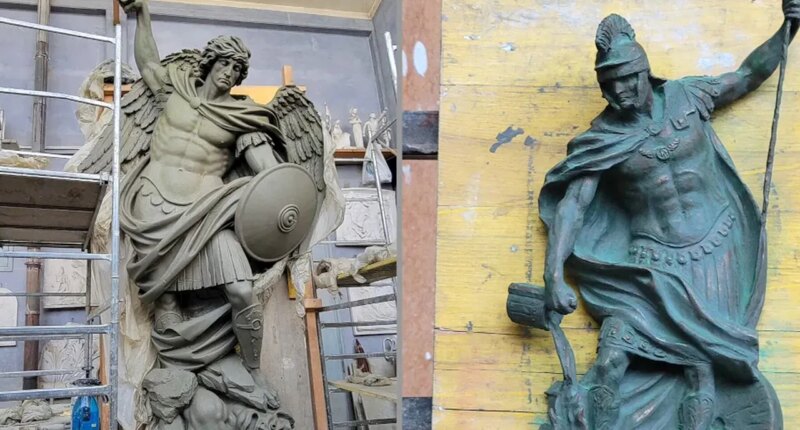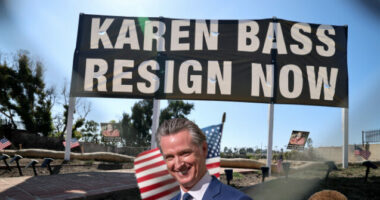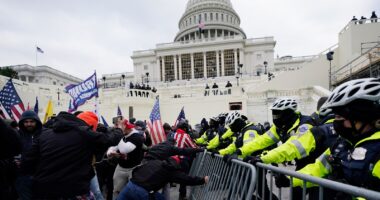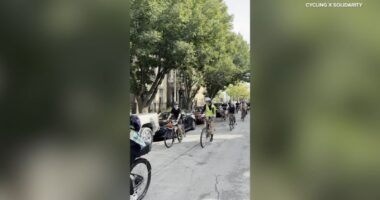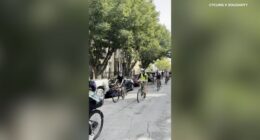Share this @internewscast.com
The community of Quincy, Massachusetts, finds itself embroiled in a contentious debate over the proposed installation of two imposing bronze statues of Catholic saints at its new public safety building. This initiative has sparked division among residents, exemplifying the ongoing conversation about the intersection of art, culture, and religious symbols in public spaces.
Joe Davis, senior counsel at the Becket Fund for Religious Liberty, presented a defense of the statues in a recent interview with Fox News Digital. According to Davis, Quincy’s decision to erect statues of Saint Michael the Archangel and Saint Florian is rooted in a longstanding tradition of using art to pay homage to bravery and sacrifice, rather than being an infringement on the constitutional principle of church-state separation. “This case is about a city trying to beautify a public space and honor those who put their lives on the line every day,” Davis elaborated. “These are figures that are important to firefighters and police officers around the world. The purpose of these statues is to inspire and encourage the people who work there.”
The artwork in question features Saint Michael the Archangel triumphantly standing over a vanquished figure, armed with a shield and spear, while Saint Florian is depicted quenching flames with water. These statues are set to be prominent fixtures outside Quincy’s new Public Safety Building, a $150 million complex designed to accommodate the city’s police and fire departments.

Commissioned by Mayor Thomas P. Koch in 2023, the statues are estimated to cost a total of $850,000. While some see the project as a meaningful tribute to public safety personnel, it has also sparked significant controversy. Critics argue that allocating taxpayer dollars for the display of religious symbols on government property contravenes the Massachusetts Constitution and the First Amendment’s Establishment Clause.
Background on the dispute
This debate has been simmering in Quincy, reflecting wider national discussions about the role of religious imagery in public spaces and the implications for constitutional rights. As the city moves forward with its plans, the conversation is likely to continue, engaging both supporters and detractors in a broader dialogue about the values and traditions that define public art and civic identity.
The project has ignited months of heated debate across the south of Boston, with critics arguing that using taxpayer money to display Catholic imagery on government property violates both the Massachusetts Constitution and the First Amendment’s Establishment Clause.
In May 2025, the American Civil Liberties Union (ACLU) of Massachusetts, joined by the Freedom From Religion Foundation and Americans United for Separation of Church and State, filed a lawsuit on behalf of 15 residents from a variety of faith traditions.
The plaintiffs argue that the statues send an “exclusionary message” that suggests that non-Catholic residents “are second-class citizens who should not feel safe or equally respected” by their own government.
The ACLU had earlier warned city officials in a Feb. 24 letter that the plan “plainly violates” the Massachusetts Declaration of Rights.
“Placing larger-than-life statues of Catholic saints in front of a public building unequivocally advances one religion to the exclusion of all others,” the letter stated, noting that the imagery of Saint Michael standing on a demon’s neck was “particularly abhorrent” and “reminiscent of brutal force.”
Davis: ‘This is about honoring service, not promoting faith’
Davis rejected those claims, insisting that the city’s intent is consistent with long-standing American traditions of civic art that carry religious associations.
“If we say that a symbol cannot be displayed in public just because it has religious associations for some, that’s going to require us to take down quite a bit of public imagery across this country,” Davis said. “At the U.S. Supreme Court, there’s a statue of Moses holding the Ten Commandments. It has religious meaning, yes, but it also symbolizes law and justice. The same is true here.”
Davis compared Quincy’s statues to the Bladensburg Peace Cross, a World War I memorial in Maryland that the U.S. Supreme Court upheld in 2019 as constitutional.
“That cross honored the war dead. Quincy wants to honor firefighters and police officers,” he said.

One of two spots in front of the new Quincy Police headquarters on Sea Street that is designed to hold a statue, on Friday, September 19, 2025. (Greg Derr/The Patriot Ledger / USA TODAY NETWORK via Imagn Images)
The Becket Fund, which specializes in defending religious expression in public life, plans to appeal the injunction that has temporarily halted installation of the statues. Davis said the team hopes the case will clarify whether public symbols with religious origins can exist in civic spaces when used for secular or historical purposes.
“It could either go to the intermediate Massachusetts appeals court or straight to the Supreme Judicial Court, which is the high court of Massachusetts,” Davis said. “And that court is going to be asked to address an important question and to set an important precedent, which is whether public symbols can be scrubbed from the public square just because they have religious associations to some people. I don’t think that’s right. It would set a very dangerous precedent.”
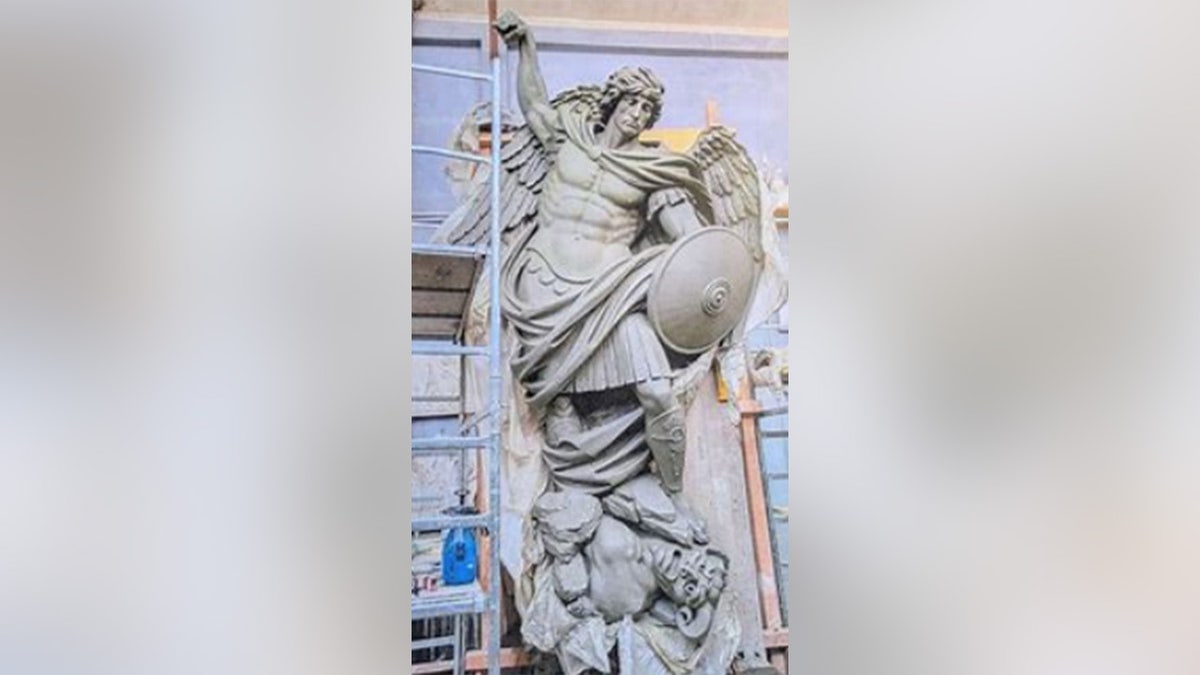
A bronze statue depicting Saint Michael the Archangel standing over a defeated figure, holding a shield and spear in a dramatic pose symbolizing protection and triumph over evil. (Norfolk County Superior Court)
Local reaction
Koch has maintained that the statues were chosen to “honor and protect” first responders, noting that many police officers and firefighters carry medals or prayer cards bearing the same saints’ images. The works are being sculpted in Italy by artist Sergey Eylanbekov, who also created public monuments of John Adams and John Hancock for the city.
Critics say the mayor commissioned the project without public notice or City Council approval. According to the lawsuit reviewed by Fox News Digital, the first payments to the artist were made in 2023, but most city officials and residents did not learn of the plan until February 2025, when a local newspaper published renderings of the building showing the two saints flanking its entrance.
A petition opposing the statues gathered more than 1,600 signatures, and an interfaith coalition of 19 clergy members from Catholic, Jewish, Unitarian and Protestant congregations issued a public statement warning that the display “sends a message that there are insiders and outsiders in this community.”
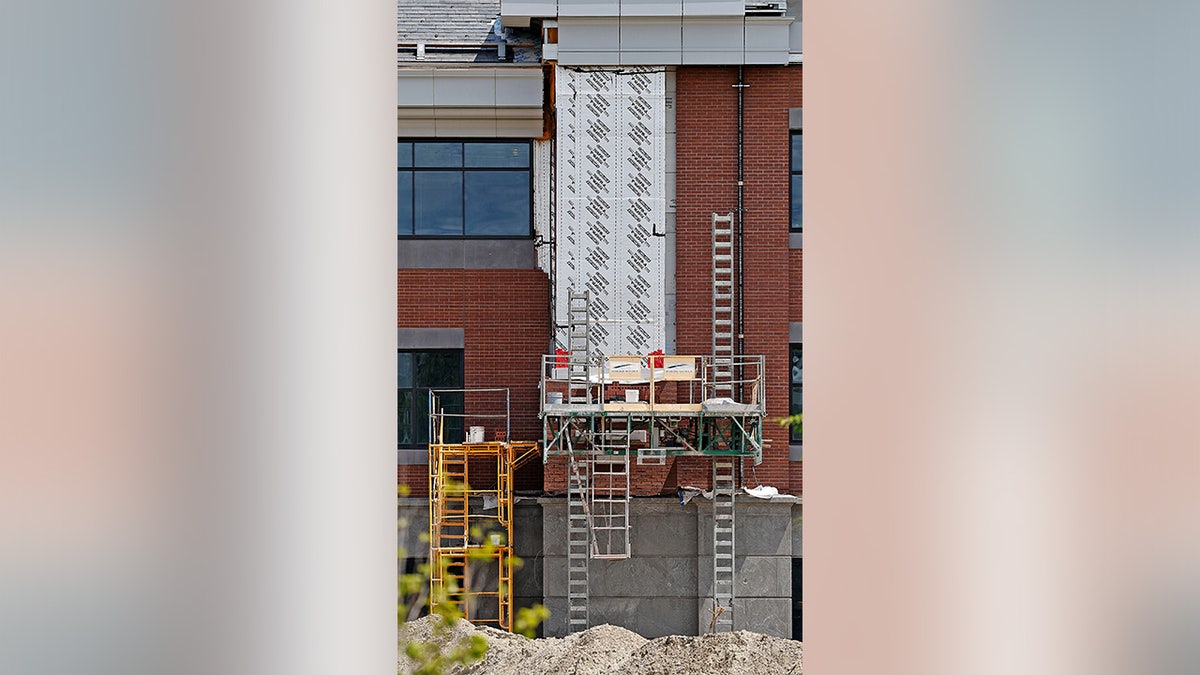
The spaces on each side of the new Quincy Police headquarters front door are waiting for the installation of two controversial statues, on Monday, June 2, 2025. (Greg Derr/The Patriot Ledger / USA TODAY NETWORK via Imagn Images)
The lawsuit contends that the statues fail all four parts of the Massachusetts Supreme Judicial Court’s test for determining religious neutrality. Although the federal high court abandoned that test in 2022, Massachusetts courts continue to apply it under the state constitution.
Davis, however, said courts have long recognized that government displays can have mixed religious and secular meanings.
“It’s very troubling to say that because some people might view something as religious, it therefore has to be taken down. And in fact, that would give a really imbalanced and inaccurate presentation of our history and culture if the religious aspects had to be sort of scrubbed out,” he said.
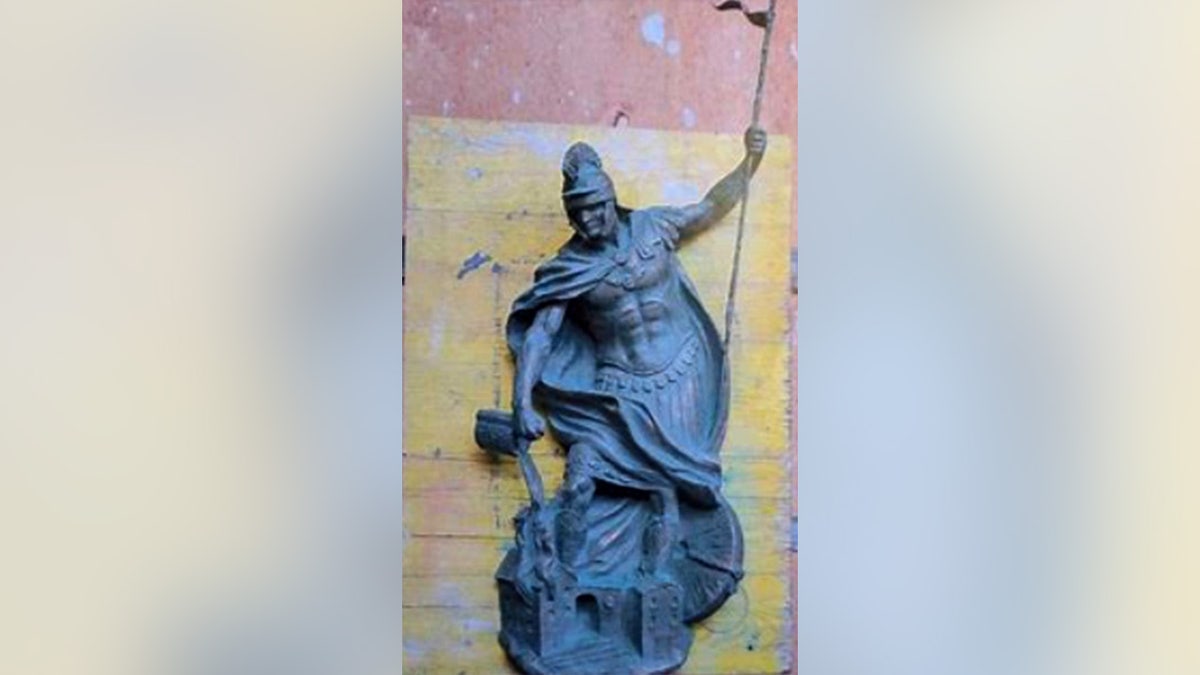
A bronze statue depicting Saint Florian pouring water over a burning building, symbolizing protection against fire and honoring firefighters. (Norfolk County Superior Court)
What comes next
The case could soon land before the Massachusetts Supreme Judicial Court, where justices will weigh whether public art that incorporates religious imagery violates the state’s strict constitutional separation of church and state.
For now, the statues remain in storage overseas, awaiting shipment to Quincy later this year. City officials have said they will “stay quiet on the affixing front” while the legal battle plays out.
“Quincy is doing what cities have done for centuries,” Davis said. “Using art to honor the people who protect and serve. That’s not a religious act. It’s an act of gratitude.”
Fox News Digital has reached out to the ACLU of Massachusetts and the city of Quincy for comment.
